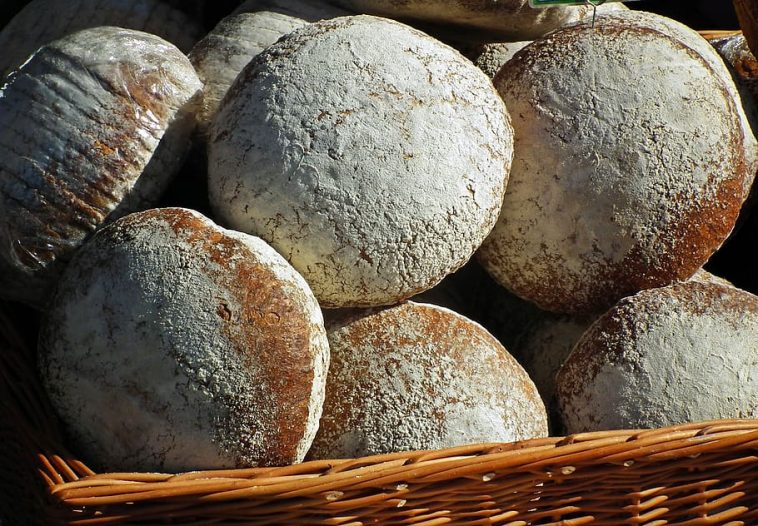Bread is something so simple, so quotidian in Morocco. But at times, it’s elevated to
more than that. This bread, with pieces of black olives (ideally bold, salt-cured ones),
coarsely ground walnuts, and sautéed onions, is adapted from one that a Marrakech
dada (traditional family cook), Khadija Dilali, prepares for the year’s main celebrations. It
has a lovely burnished golden top from a brushing of egg yolk, is spongy on the inside,
and exudes delectable savory aromas and flavors.
Khadija cooks in AnaYela, a small, sumptuous riad sunk deep in the residential northeast
corner of Marrakech’s medina. The owners strongly believe that preserving the medina
involves more than conserving buildings. The medina is a living organism, with its people
and their way of life, and they take an active part in its daily rhythms. That begins with
baking bread—including this one—in a communal oven down the lane.
The bread is divine with an herbed butter. Slightly soften the butter and mix with
chopped oregano, thyme, or rosemary, or a blend of all three.
BLACK OLIVE, WALNUT,
AND ONION BREAD
MAKES FOUR 5 – T O 6 -IN/12- T O 15-CM LOAVES
31⁄2 Tbsp olive oil
2 medium red onions, grated
11⁄2 Tbsp/20 g firmly packed fresh baker’s yeast
1 tsp sea salt
3⁄4 cup/180 ml warm water
33⁄4 cups/500 g all-purpose flour
1 cup/100 g walnut pieces, roughly ground
3⁄4 cup/100 g black olives, pitted and quartered
1 egg yolk, whisked
In a medium skillet or sauté pan, heat the olive oil
over medium heat. Add the onions and cook until
soft and translucent, about 12 minutes. Transfer
to a bowl to cool.
In a small bowl, dissolve the yeast and salt in
the water.
In a large mixing bowl or gsâa, sift in the
flour and then blend in the walnuts, olives, and
reserved onions. Form a dome with a well in
the top and begin working in the yeast mixture,
kneading until a compact ball forms. Add a touch
more water if needed.
Transfer the dough to a clean, lightly floured
surface and knead for 10 to 15 minutes until supple,
elastic, and tacky to the touch.
Divide the dough into four even pieces and
roll into slightly flattened balls. Lightly dust the
tops with flour. Cover with a clean kitchen cloth
and let rest for 10 minutes.
Line a baking sheet with parchment paper or
lightly flour the sheet. Transfer the loaves to the
prepared sheet, spacing them at least 2 in/5 cm
apart. With the palm of a hand, flatten to about
1 in/2.5 cm thick. Lightly dust the tops with flour,
if needed. Cover the loaves with a clean kitchen
cloth and then with plastic wrap, and leave in
a warm place to rise for 1 hour. The loaves are
ready when the dough springs back after it is
very lightly poked with finger.
Preheat the oven to 350˚F/180˚C/
gas mark 4.
Using a pastry brush, paint the top of the
loaves with the egg yolk. Bake until golden and
spongy, about 25 minutes. Rotate the pan halfway
through baking. Cool the loaves on wire racks.
Once completely cooled, store in a cloth bag
until ready to serve. To keep longer than a day,
wrap in plastic wrap or aluminum foil and freeze.
